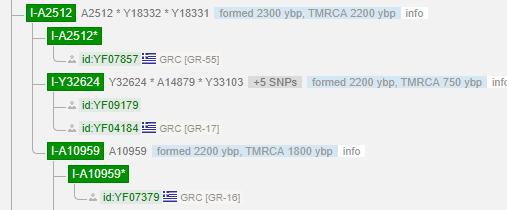I meant a region within Albania where R1a and I2a peaks and that region is South-Eastern Albania. The other regions have below 5% of these haplogroups.
You're right and you would know better, it's the recently tested Albanians that are coming up as possibly Norman according to the Albanian project that confused me. Nevermind.
I don't know about Poland having been already Slavic at that time but the fact that Goths could have brought Slavic R1a is highly probable and completely logical, and similarly the distribution of I2a could have been caused or brought by Goths too and to me this makes more sense since I'm linking them to a Latin speaking Balkan population.
Not to mention that the distribution of I2a doesn't fit the Slavic migration at all with ratios of I2a:R1a in Bosnian Croats 7:1, Serbs 2:1, Montenegro 4:1, Croatia 1,5:1, Macedonia 2:1, then we have Kosovo 1:2, Albania 1:1, Bulgaria 1:1, Greece 1:1, Aegean Greeks 1:3 and very interestingly Hungary 1:2 despite being adjacent to Serbia and Bosnia.
In my point of view R1a is spread more or less evenly and its distribution is explainable, where Northern Greece has more R1a than Bosnia, Bulgaria, Macedonia, and twice more than Montenegro, and that still makes sense, but you cannot say the same for I2a where the chances of a founder effect specifically in Western Balkans and specifically in mountainous settlements is next to impossible.


